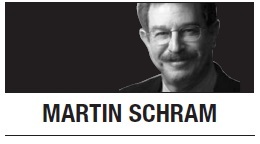Some one thousand miles due east of Moscow’s always-tightly secured Kremlin, where Russia’s president and foreign minister met Wednesday with America’s secretary of state, life has long seemed pastoral and downright peaceful.
It may well be that nothing about the small southwestern Siberian city of Shchuchye was on the minds of Vladimir Putin, Sergey Lavrov and Rex Tillerson as they confronted each other’s diplomatic demons.
They may never have known the tranquility that a handful of Americans savored not too many years ago as they drove past a grove of white-barked birch trees and came to a rather bucolic rural spot outside Shchuchye, which is just up the road from Russia’s southern border with Kazakhstan. The visitors gazed across a field at 14 wooden buildings that looked like battered old barns, doors secured only by simple padlocks. Once inside, the Americans saw what looked like wine racks, stacked all the way up to the old corrugated-metal-and-wood-slat roofs. In some places, the racks were easy to see, thanks to the sunlight that poured through gaping holes in the roofs. After a few blinks it became obvious that it wasn’t wine bottles on those racks. It was artillery shells. They were lying on their sides, rack after rack. The artillery shells contained chemical death. On that day in 2002, this was the Soviet Union’s largest arsenal of chemical weapons, most of the shells containing nerve gas.
When then-US Sen. Sam Nunn, D-Georgia, first saw the site, he said he wouldn’t keep a good horse in a barn like that. Later, as Russian government officials watched approvingly, Sen. Richard Lugar, R-Indiana, showed a photographer how easy it would be for a thief to steal just one shell and get away with the hopes of selling it to a terrorist. Lugar picked up a shell, slipped it into his briefcase, and just looked like an ordinary nice guy (with a briefcase) on a farm not unlike his own back in Indiana. Lugar replaced the shell on the rack. But everyone there knew the shell, if detonated in a crowded city, could kill as many as 100,000 people.
Nunn and Lugar visited the Shchuchye arsenal in their roles as the authors of the US Congress’ Nunn-Lugar Cooperative Threat Reduction Act, a historic agreement that helped safeguard the world after the collapse of the Soviet Union. Nunn, while visiting the Soviet Union’s last president, Mikhail Gorbachev, who was under house arrest at his country dacha, had realized no one was in control of the Soviet Union’s vast nuclear, biological and chemical arsenals. Suddenly Russia’s weapons of mass destruction were vulnerable and could fall into terrorist hands.
The Nunn-Lugar program, an innovative partnership of the United States and Russia, set about securing the world’s vulnerable weapons of mass destruction -- and also funded the destruction of vast portions of these vulnerable arsenals. In Shchuchye, the program built a vast facility that secured and destroyed deadly and outmoded arsenals. The Nunn-Lugar program merited a Nobel Prize, but somehow that never happened.
And now, as the world’s two major nuclear nations are locked in an era of new hostilities, the Nunn-Lugar era of cooperation has ceased — just when terrorist threats are increasing and a new innovative era of cooperation is urgently needed.
On Wednesday, Putin, Lavrov and Tillerson exchanged counter-realities about the Syria chemical massacre. Russia insisted international experts are needed to prove who did what. America says there’s no doubt: Syria did it. The only question is whether Russia knew in advance or got conned by its client, Syria.
But the two nuclear adversaries realized they also still shared a common bond -- an urgent need to defeat global terrorism. Especially their common enemy: the Islamic State terrorists.
And recently, an urgent new report, “Pathways to Cooperation,” reminded the two leaders of the urgency of their common cause. The report, the work of a joint US-Russian conference, was sponsored by the US-based Nuclear Threat Initiative (founded by philanthropist Ted Turner and Nunn) and the Russian-based Center for Energy and Security Studies. It recommended more than 50 projects the two countries should implement. The report contained a warning call from two still-influential exes: former-Sen. Nunn and Russia’s former Russian Foreign Minister Igor Ivanov.
“Today’s world is one in which nation-states no longer have a monopoly on the means for mass destruction,” they wrote in the report. “Terrorist organizations (such as Islamic State and al-Qaida) … have openly declared their intention to acquire nuclear and radiological weapons.”
Just months ago, nuclear experts were confident Putin and his new best friend, Trump, would forge a new urgently needed era of cooperation. Now nothing is clear, except the urgency of today’s threat. As NTI vice president Andrew Bieniawski said, “We’ve reached a key pivot point.”
Attention ex-Sens. Nunn and Lugar: Please return to your old battle stations.
By Martin Schram
Martin Schram, an op-ed columnist for Tribune News Service, is a veteran Washington journalist, author and TV documentary executive. -- Ed.
(Tribune Content Agency)






